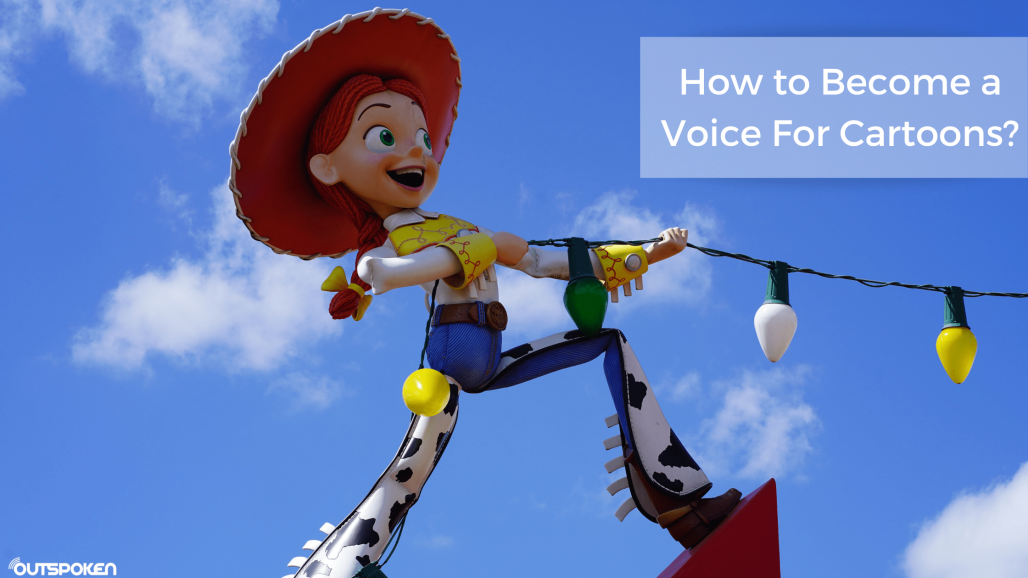Voice actors bring characters to life by understanding their backstory, finding their voice, and con...
How to Become a Voice-Over Artist for Cartoons and Animation

Breaking into cartoon voice-over work can seem a little daunting at first, but you shouldn't feel intimidated if you're just getting started with animation voice-overs. It's a fun and varied career, and many people who work in other related fields transition to it. There are several advantages to working in cartoon production. Unlike live-action films, they often call for smaller crews and don't require on-location shootings - allowing many artists to work from home instead.
We have gathered some tips and tricks to help you secure your first cartoon gig and open the doors to the world of character work. If you've always felt drawn to cartoon acting or want to try a new area of voice-over, we hope you’ll find these recommendations useful.
The First-Ever Cartoon Voice
The first-ever synchronized cartoon using sound is a classic Disney animation called Steamboat Willie. You might have seen this historical piece; it features Mickey Mouse and his girlfriend Minnie and includes a song called "Steamboat Bill," a composition from the 1910s. Mickey, in fact, was voiced by Walt Disney himself. The term voice-over actually comes from this "voice over picture" type of project.
Working with Cartoon Samples and Scripts
One of the first things you can do if you are wondering how to become a voice-over for cartoons is to record a sample of your voice. But don't just jump into it; first, you should practice a script. There are many available for free on the internet. Many voice actors use sample scripts to build strength in this particular area.
Getting into (Cartoon) Character
Being a cartoon voice-over artist requires more than a good voice. It demands a degree of creativity that makes this job particularly challenging and rewarding at the same time. Having a creative approach is essential for getting into voice acting in general, but it can be your best tool if you want to work with cartoons and animations.
When you secure a role for a cartoon character, you should consider all the elements that make them; find the voice that best embodies them. You need to think and analyse who is really is your character? What’s the world he/she lives in? What sort of time they live in? Is it our times or maybe the story is set in the future? What is their role and what do they want to achieve? These answers will help you interpret your script much better.
Another tip if you're wondering how to become a voice-over for cartoons is to imagine the age range of your character. For example, you might want to use a gravely senior voice for an older wizard character or a more cheerful voice for a younger protagonist. If you’re not sure about the tone you should use, you can watch existing cartoons and see how other artists have decided to interpret the different characters. This can help you get a clear picture in your mind about how the role should sound. Many producers will also be able to give you an image or concept of the character, so it's a good idea to look at the picture while reading the script.
Getting Ready For Your First Cartoon Voice Audition
Many voice-over enthusiasts take acting classes or hire a voice-over coach before they start auditioning for animation projects. You don't need to follow these steps necessarily; you can listen to the professionals, practice on your own and then send your demos when you feel ready.
Many cartoon jobs in the voice-over industry have migrated from classic in-person readings to online. This means you will probably be able to apply for more auditions and potentially land more jobs without leaving your house. Launching a cartoon voice-over career is more accessible than it's ever been. Before, you would have to live close to a significant market and go to recording studios. Nowadays, you can not only secure a gig but also complete your entire cartoon voice-over job from your studio at home.
Before you submit your audition, make sure you have:
- Read the voice-over script many times
- Read the brief and the character description very carefully
- If you have enough information about the project, do your research on the cartoon your character is in
- Take notes (on paper or in your head) about important parts of the script and how you want to interpret the lines
- Rehearse before you even stand in front of your microphone
- Listen back to your takes before choosing the best one and sending it off to the client. Make sure you followed the file naming instructions and double check if there are no background noises
Once you've looked over the script a few times, you're ready to begin practising. Repeat the text multiple times until you feel comfortable with how it reads. It's generally recommended that you record your audition when you have the most energy. For most, that would be early in the morning (when your voice is not yet tired), but night owls might prefer to record later in the day or even at night when everything is quiet. All that matters is that you are in the right mindset.
Once you have warmed up, it's time to perform your read. Try to avoid alcohol, carbonated drinks, and caffeinated beverages, so you sound your best. And press record! Keep in mind that most clients will only listen for 15-30 seconds before making a decision.
What is it Like to be a Cartoon Voice Artist?
Most cartoon voice-over actors will tell you they find their job extremely satisfying. You should be ready to expect some rejections in your career (we all do!), but you shouldn't take them personally or let them skew you away from your goal.
Voice-over actors for cartoons (and casting directors) prefer to work with a wide vocal range to create multiple characters and constantly practise their most important skills. For example, speaking at a lower and higher pitch to change your interpretation accordingly. If you secure a cartoon voice-over job, you will most likely have to provide a library of sounds for the character’s voice; these can include reaction noises, crying, and laughing, among many others.
Here's a great video with some insights on what it is like to be a voice actor for an animated movie and how they train for the role.
Most cartoon voice-over artists for animation films and TV shows get paid either per episode or per hour. Make sure you also consider any extras you might have to do as part of your contracts, such as voices for toys and promotions. You should adjust your fee accordingly if that's the case.
Finding Success as a Cartoon Voice Actor
The key to creating successful voices for cartoon characters lies in carefully studying the script, finding the perfect tone for the role, and practising your interpretation (many times if necessary) before auditioning. Many artists also like to research the part, for example considering motivations and backstory.
Cartoon voice-over artists usually enjoy working with different characters and different types of voices. If you know a role is perfect for you, be it cartoons, radio ads, or video games, you should always make sure you practice the script and carefully think about how to build your best performance. This will help you have a high-quality audition and significantly increase your chances of getting hired.
If you’re looking for a voice talent for your next animation or you want to branch out this this genre OutSpoken can help. Create your free account today.
Newsletter
Stay up to date with news and special offers. Get to know our new actors and features
NEED HELP?
Visit Frequently Asked Questions page or send us a question.











.png)







Comment